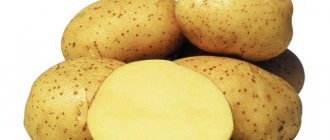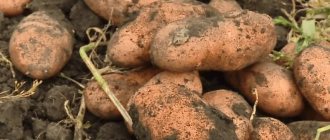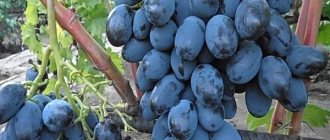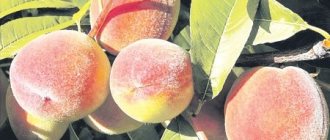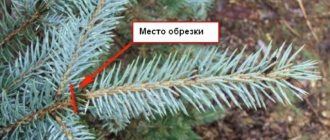Characteristics of potatoes Karatop
Potato Karatop is the result of selection by German scientists. They created the variety in 1998. It was included in the State Register of the Russian Federation in 2000. At first, table variety plants began to be grown in the Northwestern and Middle Volga regions. To understand the characteristics of the Karatop potato variety, photos of which are presented in the article, you need to study the description of the bushes and tubers.
Bushes
Plants of medium height, most often with erect shoots and powerful tops. Tops of medium size, rich green color, intermediate type. The edges of the leaf blades are slightly wavy.
Tubers of the Karatop variety
Oval-round root crops of the Karatop potato are small in size. Their average weight is 60-100 g. As a rule, all tubers in a hole are of different weights. The surface of the fruit is even, smooth, with a yellowish tint and slight roughness.
The eyes lie shallow, almost on the surface, so peeling potatoes is easy. When cut, the flesh is light cream or creamy. Each tuber contains 10.5-15% starch.
Description and characteristics of potatoes
The main distinguishing feature of this type of potato is its accelerated development. The cultivated plant belongs to the ultra-early ripening varieties. Fifty days after germination, you can begin harvesting. The stem type is semi-erect. The bush has medium height.
The main characteristics include the following:
- lack of blue-violet color;
- average size of intermediate leaves;
- the tops are green in color;
- a small number of white flowers during flowering;
- high level of productivity;
- the total number of root crops from each bush is up to 30 pieces;
- high resistance to some diseases affecting fruits and stems;
- resistant to various types of mechanical damage;
- can be stored for a long period of time (provided it is in a warm room).
Karatop produces the same yield result regardless of the type of soil in which it is planted. It is worth noting that this variety does not tolerate dry periods well.
Karatop potato tubers also have some distinctive features from other varieties.
- The spherical shape of the root vegetable.
- The peel is yellow.
- The surface is smooth, without irregularities.
- The pulp has a medium-grained structure.
- Amenable to mechanical cleaning.
- An individual tuber weighs from 70 to 110 grams.
Pros and cons of the Karatop potato variety
When creating the variety, German breeders tried to achieve high immunity. They succeeded, because Karatop has a lot of advantages:
- Excellent external data.
- The variety is early ripening, early potatoes can be dug up on the 50th day after emergence. The growing season ends on the 60-65th day.
- The productivity of Karatop is high.
- The variety is unpretentious and can be grown on any soil, although the addition of mineral fertilizers increases the yield.
- Universal use of tubers of the variety.
- Potatoes of the Karatop variety are distinguished by excellent transportability.
- The tubers are stored until the new harvest, the yield is at least 97%.
- Root crops are resistant to mechanical damage, cuts heal quickly and do not rot.
- Thanks to its high immunity, Karatop is practically not affected by viruses A and Y, potato cancer, nematodes, and glandular spot.
It is impossible to find cultivated plants without shortcomings; the Karatop variety also has them:
- the plant does not tolerate drought well, productivity decreases sharply;
- Root crops can be affected by late blight.
Peculiarities
This variety is notable for being suitable for planting in almost any type of soil. The exception is soils containing a large number of mechanical elements; in their environment it will need additional feeding and care.
The downside is the high dependence on water. Therefore, if you want to get a large and early harvest, then installing an automatic irrigation system would be a good solution.
Due to the characteristics of its fruits, it is perfect for both cooking at home and for growing for industrial purposes. Under the influence of heat treatment, it cooks perfectly and does not lose its pleasant color. Karatop is perfect not only for making regular purees, but also for making chips, and even for freezing.
Before planting, in order to achieve the best yield results, it is recommended to carefully select planting material (you should select only the largest tubers without any damage). It is also best to initially grow the plant in peat pots.
When planting material in the soil, it is better to place tubers of early-ripening varieties closer to each other. To feed Karatop, you should use those fertilizers that are well and quickly absorbed.
The reason for this is that all early-ripening potato varieties absorb nutrients much faster than their late-ripening counterparts.
Read about how and when to apply fertilizers, as well as whether it is worth doing this when planting, in separate articles on our website.
IMPORTANT! During the ripening period, your plant will process beneficial minerals at double the rate, so during this time it will need additional watering and care.
Karatop is one of the latest varieties bred by German agronomists. Cultivated in temperate climate zones, it is often grown in Russia, Moldova and Ukraine.
The main features of the variety are:
- Precocity . The variety is considered early ripening, the vegetative period of which is 60-65 days. But, on the 50th day after planting, you can begin harvesting.
- Productivity . Karatop produces an excellent harvest, which at the first digging (45 days after planting) is 35 tons per hectare, and at the end of the ripening period it can reach 50-52 tons.
- Drought resistance . Potato Karatop reacts negatively to drought. In the absence of natural or artificial irrigation, tuber crops form more slowly, and the quality of the crop at the end of the growing season decreases.
- Undemanding to soils . Karatop feels great in almost all types of soil. But, in soils with heavy granulometric composition, it requires additional care and nutrition.
- Application . A table potato variety used both in home and industrial preparation. It tolerates long-term storage well, keeping quality is 97%. Suitable for germination and cultivation under film.
- Taste qualities . The taste of Karatop potatoes is rated 4.7 on a five-point scale. When cooked, it boils well and is perfect for making purees, chips, and also for freezing.
- Resistance to mechanical damage . Karatop tolerates mechanical damage well, with very minor damage.
- Disease resistance . The Karatop variety is famous for its high resistance to diseases and pests such as viruses A and Y, potato canker, nematode, glandular spot, and late blight of tops. Poor resistance to late blight of tubers was noted.
To compare the characteristics of Karatop with other potato varieties, pay attention to the table below:
| Variety name | Starch content | Keeping quality |
| Openwork | 14-16% | 95% |
| Desiree | 13-21% | 95% |
| Santana | 13-17% | 92% |
| Nevsky | 10-12% | good, but the tubers germinate early |
| Ramos | 13-16% | 97% |
| Taisiya | 13-16% | 96% (tubers have a long dormant period) |
| Lapot | 13-16% | 94% |
| Rodrigo | 12-15% | 95% (not subject to freezing) |
When it comes to storing potatoes, you only need to follow a few simple rules. We have prepared for you detailed materials about shelf life, the correct choice of location and storage conditions in winter.
Planting and caring for Karatop potatoes
Potato tubers of the Karatop variety can be planted in the soil after it has warmed up to a temperature of +9 degrees at a depth of at least 13 cm. Only in this case will the planting material remain alive. The timing will vary in different regions. In areas with a sharply continental climate, work is planned towards the end of May.
Selection and preparation of a landing site
Despite the fact that, according to the description and reviews of gardeners, the Karatop potato variety is unpretentious in terms of soil composition, it is still better to plant root crops in fertile soil. It is better to prepare the site in the fall. Mineral or organic fertilizers and wood ash are added to the soil and dug up.
Attention! Fresh manure cannot be applied to the crop, as it may contain helminths and weed seeds.
Preparation of planting material
Under no circumstances should seed tubers be planted on the site immediately after removal from storage. Potato varieties are removed a month before the expected planting date and begin to be prepared:
- Karatop tubers are sorted, all specimens, even with minor damage and signs of rot, are discarded.
- Then calibration is carried out. Potatoes the size of a large chicken egg are considered the best planting material.
- A solution of special preparations is diluted in a cuvette and the tubers are dipped into it for 30 minutes. You can use Fitosporin or dilute potassium permanganate.
- After this, the fruits of the Karatop variety are laid out in wooden boxes in 1-3 rows. The room temperature must be at least 13 degrees and have sufficient lighting.
- During germination, the tubers are turned over so that they are illuminated evenly. This will ensure better germination of the eyes.
- A week before planting, the potatoes are carefully placed in a container of water so that the tubers are saturated with moisture.
- After this, the root vegetables are placed back in the box and covered with film with holes.
- On the second day, the film is removed and covered with wet sawdust. They are not removed before planting.
By the time of planting, powerful sprouts with root rudiments will appear on the tubers of the Karatop variety.
Important! Tubers of early potato varieties cannot be cut for planting.
Landing rules
When planting, root crops are buried to 22 cm and sprinkled with soil on top. The distance between the holes is about 32 cm, and the row spacing should be 70-82 cm so that the bushes do not interfere with each other during growth. After 10-12 days, the first shoots will appear.
Advice! To ensure access of oxygen to the Karatop potato tubers, the area must be leveled with a rake.
Watering and fertilizing
Based on the characteristics and reviews of those who grew the Karatop potato variety, the crop responds poorly even to short-term drought. Therefore, gardeners who decide to take up this plant should take care of timely watering of the site. It is best to provide sprinkling.
The plantings are watered for the first time as soon as the shoots appear. Then during budding and until the end of flowering.
Warning! After flowering has ended, watering is unacceptable, as this can cause the development of late blight on the leaves and roots of the Karatop variety.
Loosening and weeding
Any potato plantations, including those with the Karatop variety, must be loosened. This procedure is performed several times to remove the hard crust that does not allow oxygen to reach the tubers. The first loosening is carried out immediately after planting, then the area is harrowed when the first shoots appear.
This procedure will help get rid of small weeds. As the potato bushes grow, so does the grass. It must be removed from the site before hilling. In the future, weeding of the Karatop variety is carried out as the weeds grow. If this is not done, the grass will draw nutrients from the soil, which will negatively affect the harvest.
Hilling
Karatop potatoes, like many varieties of crops, need to be hilled 2 times. The first time they make a ridge over the bushes when the height of the bush is 20-25 cm. Hilling should be at least 15 cm. The second time the procedure is repeated after 14-21 days, until the tops are closed in the rows. You can hill up one plant at a time or raise ridges along the length of the row on both sides.
Attention! The higher the ridge of the earth, the more stolons with tubers are formed.
Breeding instructions
Karatop potatoes can be used for both industrial and home garden cultivation. If it is bred en masse on an industrial scale, the following units are used:
- For soil cultivation - plows, as well as harrows, cultivators or diskers.
- Seeders.
- Hillers.
- Irrigation systems (sprinkler or drip).
- Cleaning units.
Important! In the household, there are enough hand tools or attachments for walk-behind tractors or mini-tractors
Preparation
plot
The soil for Karatop must be prepared in the fall.
- Full-scale loosening is carried out (for manual digging - no less than 30-40 cm (shovel bayonet); if possible, it makes sense to loosen by two bayonets with temporary removal of the top layer and backfilling it after digging the bottom).
- Organic fertilizers are added - compost, humus, etc. When digging, organic matter is evenly mixed with the soil.
- In the spring, the area is loosened by 15-20 cm (in the garden - by half a bayonet, on an industrial scale - to the depth of embedding with a harrow or diskator). If possible, apply half a kilo of humus, compost, and ash per bush.
Semyan
Seeds are selected in advance during the autumn harvest. Select identical tubers no smaller than a chicken egg without damage or disease.
At least a month before planting, the tubers are germinated in a light and warm storage. Germinated potatoes are used, those that did not produce tubers are disposed of. Additionally, you can use “Prestige” or other chemicals with a similar effect to accelerate growth. It is also permissible to use potassium permanganate, Bordeaux mixture or copper sulfate solution to combat fungal pests.
When to plant?
Karatop potatoes need to be sown when the soil temperature, measured 10 cm from the surface, does not drop less than +7-8 degrees within 24 hours (artificial heating of beds outside greenhouses makes no sense!). Usually this time comes according to the calendar like this:
- Far Eastern region - after the 15th of May.
- Northern, East Siberian, West Siberian - after May 25 or before June 5.
- Northwestern - from May 15 to 25.
- North Caucasus region – the first days (until 10) of April.
- Central Chernozem, Volga-Vyatka, Middle Volga - until May 10-12.
- Central region and Kaliningrad region - the first ten days of May.
Scheme
Potatoes Karatop are planted according to the following scheme:
- There should be at least 70 cm between the rows in order to be able to fully hill up the beds.
- Between bushes in a row - at least 30 cm.
- Depth – from 4 to 8 cm.
- Hilling. It begins when the stems reach at least 10-12 cm in height. Before this time, hilling can be used if there is a threat of spring return frosts.
- Watering. It should be carried out regularly, at least 3-4 times per season. On average, you need to water once every 7-10 days.
- Loosening. During the growing season, loosening is carried out regularly every 7-10 days.
- Weeding. You need to weed as the weeds grow, at least 3-4 times per season.
- Feeding. The first feeding is done when the buds are formed on the bushes with a mixture of the following composition:
- 20 g of ash (wood or vegetable).
30 g potassium sulfate.
- One and a half buckets of water heated to 30 degrees or more.
- Other care measures. If possible, Karatop beds should be covered with mulch from freshly cut grass.
Feeding consumption is about half a liter for each bush.
From the beginning of the appearance of inflorescences, 500 mg of infusion from 2 tbsp is added to each bush. spoons of superphosphate and 250 g of manure per bucket of water.
Diseases and pests
According to the description given by the originators, as well as reviews from gardeners, the Karatop potato variety has high immunity to many diseases, pests and unfavorable conditions.
Plants are practically free from viruses Y and A, potato cancer, glandular spot and golden nematode. The presence of spores of these diseases in the garden does not reduce potato yields.
But root crops can suffer from tuber blight. To avoid damage, you need to carry out preventive treatments with fungicides, which can be purchased in specialized stores. The solution for spraying plantings is diluted in accordance with the instructions. In addition, to increase the productivity and immunity of plants, it is recommended to use complex baits.
Important! The enemy of potato plantings is the Colorado potato beetle, but it bypasses the Karatop variety.
How to plant potatoes correctly
This type of potato has no special requirements for planting. However, it is recommended to prepare the soil for it in advance. It is advisable to dig up the soil in the fall and add compost, wood ash and superphosphate in the process.
Crop rotation rules
Good predecessors for potatoes are green manure: peas, beans, mustard, oats, barley, etc. Such plants enrich the soil with useful chemical elements, improve the soil structure, and also inhibit the growth of weeds.
Before planting potatoes, nightshades such as peppers, eggplants, and tomatoes must not have previously grown in the same area. This increases the likelihood of diseases characteristic of nightshades, especially late blight, to which this potato variety is extremely unstable.
After harvesting, the soil balance should be restored by sowing with green manure and applying complex fertilizers.
Important! Next year it is not recommended to plant potatoes in the same place again.
Landing dates
Planting usually begins in mid-April. But it is worth considering that the ground must warm up to a depth of 10 cm. This variety can be used for planting under film. Then planting can begin in mid-March.
Soil requirements
This potato is undemanding to soil. The exception is soils with a granulometric composition, i.e., containing particles of different sizes in the soil, which can affect fertility. In this case, it is necessary to provide additional nutrition and care for the crop.
Preparation of planting material
To achieve rapid ripening of the crop, as well as to obtain stronger plants, it is recommended to germinate the planting material in advance. It is worth choosing medium-sized tubers with a large number of eyes, which will later produce many shoots. Tubers should be taken dense, with a clean, smooth surface, which indicates the absence of diseases.
Direct germination occurs like this:
A small layer of moist soil is poured into the container, the temperature of which should not be lower than +15°C. Then lay out the tubers with their eyes facing up. The soil is again poured on top (2–3 cm). After this, you can lay out the next layer of potatoes.
It is important that there are no more than 3 layers of tubers in the container. For better germination, you can use copper sulfate in a proportion of 1 g per 5 liters of water, the solution of which is watered over the planted tubers. The container is placed in the light and germinated for about 2 weeks. All sprouted tubers are planted, the rest can continue to be sprouted.
Landing technology
To plant, you need to dig a trench. On light soils its depth should be up to 10 cm, in heavy soils - up to 8 cm, for clay soils - up to 5 cm. The distance between rows should be at least 60 cm. The tubers are laid out in a hole 35 cm apart and sprinkled with earth. You can first add humus or ash to the bottom of the trench as additional fertilizing.
Did you know? Homeland of potatoes
—South America. Wild potatoes still grow there.
If planting is organized under film, then before planting, in addition to the usual growing procedure, you need to keep the tubers for a week in a box with peat. Sprouted potatoes are ready for planting if they have shoots 2–3 cm long.
Harvesting and storage
The timing of digging up potatoes depends on the further use of the tubers. If root crops are grown for an early harvest, then the bushes are dug up on the 48-50th day. You just need to understand that the number of tubers will be less than after full ripening.
Important! Early potatoes are not suitable for long-term storage.
The main cleaning is planned after 60-65 days from the appearance of the first shoots. The bushes are dug up using a shovel or pitchfork, lifting the soil. Then the root vegetables are selected. The potatoes are laid out in the sun for 2-3 hours to dry. Then the root crops are removed for 2-3 weeks in a dark, well-ventilated room for further ripening.
Before harvesting for winter storage, the tubers are sorted and sorted by size. Small potatoes are not left for long-term storage; they must be used immediately. Store the tubers in the basement, in boxes or in bulk. Experienced gardeners recommend pollinating each row of potatoes with wood ash.
How to germinate seed
In order to become the owner of a good harvest, Karatop needs to be germinated before planting in open soil.
To do this, you will need land, a medium-sized box and the seed itself.
- Moistened soil (up to 3 cm thick) is poured into the bottom of a shallow box. Make sure that the average soil temperature does not fall below 15 degrees.
- The tubers are laid out with the eye facing up.
- The soil is filled up to a thickness of 3 cm. Please note that in one box the number of layers should not exceed three.
- The filled box is placed in a lighted room.
In order to increase germination, it is recommended to use copper sulfate. The proportionality is 1 gram of vitriol per half bucket of water (5 liters).
Correct fit
How to plant planting material correctly:
- In the spring, pre-planting preparations begin: planting material must be taken out of storage and placed in a warm place so that it begins to germinate. Give preference to healthy large root vegetables that are not damaged;
- After a couple of days, sprouts will appear on the root vegetables;
REFERENCE: To stimulate germination of sprouts, spray warm water. The procedure is carried out once with an interval of 2-3 days, this will prevent the tubers from becoming waterlogged.
- Planting dates depend on the region and soil warming. The soil must be heated to at least +9 ºС, otherwise the potatoes will freeze;
- The soil must be pre-treated: plowed or dug up, added fertilizer. Adding wood ash or humus helps saturate the young root system with essential nutrients;
- 2 to 3 tubers are placed in each hole and sprinkled with soil on top. Potatoes are characterized by rapid germination; tops appear in early summer.
Overview of potato varieties: German, Dutch and Kemerovo:
Advantages and disadvantages
Among the positive characteristics inherent in Golubizna potatoes are:
- high marketability rates - about 91-95%;
- excellent taste and friability;
- Suitable for home, commercial and industrial production;
- good transportability;
- long storage period - almost until the end of next summer;
- undemanding quality of care, including the plant does not react sharply to temperature changes, temporary frosts, drought;
- adaptability to close occurrence of groundwater;
- lack of susceptibility to a number of diseases characteristic of potatoes of other varieties (late blight, scab, etc.);
- resistance to pest attack;
- significant yield indicators.
Blueberry is a potato with a high content of amino acids necessary for the human body. The tubers also contain a lot of vitamins.
Golubizna has practically no disadvantages, with the exception of some hollowness of the tubers and the presence of deep eyes. The last drawback only affects the consumption of potatoes during peeling.
Gardeners' opinion
Good day to all! I advise potato lovers to plant the Karatop variety. An excellent option for residents of the North-West region. Potatoes produce excellent yields in poor soils. I remove 25 potatoes from one bush, the weight of the fruit is about 100 grams. The plant loves watering and is unpretentious in care. The mature root vegetable has excellent taste and marketable appearance. Can be stored for a long time. I didn’t find any cons for myself.
Ekaterina Andromedova, 55 years old.
Greetings to all gardeners! I want to leave positive feedback to German breeders. Thank you for the Karatop potato variety! A resistant plant, it is not afraid of almost any diseases or viruses. Feels great in poor soils and does not require serious care measures. For a better harvest, it is enough to water and weed the bushes well.
Anastasia Polikarpova, 54 years old.
Landing rules
Potatoes are planted with pre-sprouted seeds; this method will speed up the ripening of the variety. The planting material is pre-treated with an antifungal drug and left in an open area for the synthesis of corned beef; this enzyme will protect the potatoes from infection.
Recommended timing
The time for planting potatoes varies in different climate zones. In the South, planting begins in mid- or late April. In temperate climates, work is carried out when the weather has recovered and there is no threat of night frosts, approximately at the end of May. The soil temperature should not be lower than +16 0C.
Soil preparation
The site for Karatop is allocated in an open area, on a dry area. Autumn soil preparation consists of cultivation and application of fertilizers, if necessary, to neutralize the composition. Plowing is carried out 14 days before the onset of frost, organic matter and dolomite flour are added. In the spring, the area is cultivated 1 week before planting, and saltpeter is scattered.
How to plant correctly
Karatop is planted in pre-punched furrows or in holes under a shovel. Landing conditions:
- hole depth – 15-17 cm;
- width – 10-12 cm;
- row spacing – 45-50 cm;
- the interval between nests is 35 cm.
Place 2 tubers in the hole at a distance of 7-8 cm, cover the top with a mixture of compost, peat and ash, and cover with soil. Potatoes are not watered.
Key points of care
The timing of crop ripening depends not only on climatic factors, but also on how well the grower cares for the plant. In this matter, you need to know all the nuances in order to avoid mistakes, thereby causing harm and reducing the amount of harvest. It is unrealistic to completely abandon watering and fertilization, given modern environmental features.
It doesn’t matter what kind of potato grows in the garden, it is necessary to water this plant at the root. Why is this so? The first reason is that some people do not follow the recommendations and water the plant in the morning, but this should not be done, because the sun can leave burns on the leaves. Secondly, the crop is exposed to late blight, and if the plant is flooded with water, this is fraught with the development of the disease. Under normal climatic conditions, karat is watered once a week.
Fertilizer
If the plant lacks certain elements, then it will not be able to develop normally. Excess also has a negative impact. The optimal solution would be:
- At the beginning of the growing season until the beginning of flowering and budding, fertilize the tubers with phosphorus.
- Once this need passes, potatoes need potassium to improve crop performance.
- Some gardeners add fertilizer during watering, since on dry soil it can burn the lower leaves or roots.
Review of potato varieties: German, Dutch and Kemerovo
result of potatoes from meristy tubers 2015. Impala, Karatop, Scrub varieties
The potato harvest is Impala variety, planted in March under agrospan.
In order for the resulting harvest to be sent for storage, care must be taken to protect the plants from harmful organisms. The tubers are eaten by nematodes, mole crickets and the Colorado potato beetle. Preventive measures can be taken in advance. To do this, do:
- Spraying. Root vegetables are laid out on oilcloth, cellophane or tarpaulin. Chemicals are diluted in a bucket and the tubers are irrigated with them. Next, they are turned over so that all sides are treated with the medicine.
- You can also take the drug in dry form, add ash to it and roll the potatoes in this mixture.
- Soak. The drug is poured into a small container and water is added there. After which the fruits are laid and they remain there for 2-4 hours, after which they are dried and planted in the ground.
Caring for planted tubers of this variety is not particularly different from caring for other relatives with precocious development. You just need to do:
- loosening the soil;
- hilling the field;
- abundant watering;
- feeding with fertilizers.
Watering and fertilizing
Due to resistance to blackleg disease, the tubers are watered in the required quantity. They do not tolerate high temperatures and drought, but respond positively to regular watering. The beds must be moistened at least twice every 7 days.
The key substances in feeding are potassium and phosphorus. Before flowering begins, it is necessary to apply phosphorus-containing fertilizer, and after this period ends, potassium, which improves the yield characteristics.
Loosening and weeding
Monitor the condition of the soil. The first loosening is carried out 6 days after planting. Weeding and loosening should be regular to protect the fruits from weeds, grass, and moisture retention in the soil.
Hilling
Each sprout must be hilled in order to protect it from grass germination and spring frosts. The main danger is a sharp drop in temperature at night and unexpected frosts. Experienced gardeners recommend using peat crumbs in a layer of up to 4 cm.
The best mid-early varieties
On average, you can get an excellent harvest of mid-early potatoes on the 70th day. Such varieties are highly resistant to infections, except for late blight. They have excellent commercial qualities, so they can be grown for sale.
Gala
This table variety was bred by German breeders and is grown in many regions of Russia. Allows you to obtain a high-quality harvest in almost any soil and climatic conditions, but it is necessary to carry out all agrotechnical measures correctly.
Gala has the following characteristics:
- on average the yield is 250 centners per hectare, but up to 420 centners can be harvested;
- the bushes grow of medium length, the leaves are large, and the flowering is weak (the corollas are white);
- tuber weight – 80-130 g, shape – round, smooth;
- the skin is yellowish with shallow eyes, and the color of the pulp can vary from light yellow to dark yellow;
- tubers are well suited for mechanical cleaning, do not darken or become soft;
- low starch content - 11-13%, therefore often included in the diet;
- commercial quality is up to 96%, so potatoes can be stored and transported for a long time.
The plant is well resistant to scab, but is often affected by late blight and rhizoctonia.
Red Scarlet
It is one of the most popular red-skinned table potatoes, often grown in the Central and Southern regions. It was bred by Dutch breeders. In addition, the yield is attractive - from 1 hectare you can collect 400-660 centners of tubers. On average, their size ranges from 85 to 120 g. They have an oblong shape, smooth, even skin, small eyes and yellow flesh. They do not change color either due to mechanical damage or after cooking.
Such potatoes are resistant to many diseases. So, he is not afraid of cancer, nematodes, late blight and leaf curl. In addition, the plant develops well in dry summer conditions. A disadvantage can be considered slightly below average resistance to viruses and scab.
Detskoselsky
Refers to productive table varieties with a growing season of 110-115 days. The bush grows of medium height with a colored stem and is well leafy. White corollas appear. In general, the plant blooms profusely, but for a short time.
The tubers themselves are of medium size - from 85 to 120 g. The starch content in them is 12-18%, and the protein content is 1.7-2%. They have light pink smooth skin and a flat oval shape. The flesh is white, but with small eyes. The plant is not afraid of cancer, but can be affected by late blight, common scab and the S virus.
Amorosa
It is also a table variety, which is distinguished by excellent taste and good presentation. Gives the best harvest with optimal moisture levels. Ripe tubers are oval in shape, large in size, red skin and yellow flesh. The level of dry matter in them is 19.5%.
The variety is resistant to Y-virus, leaf curl, and late blight of tubers. As a rule, it is affected by common scab, but late blight of tops is more common.
Marfona
This variety bears fruit with beautiful, uniform tubers that have medium-depth eyes, an oval shape, yellow skin and light yellow flesh that does not soften when cooked. Dry matter level – 18.7%. Tubers are not afraid of mechanical damage and can be stored for a long time.
The plant can develop in conditions of high air and soil temperatures. At the same time, it is resistant to viruses and late blight of tubers. A greater threat is posed by leaf curl and common scab, and an even greater threat is the nematode.
Romano
The variety was bred in the Netherlands. The bushes grow tall and leafy. The flowers are red-violet in color. The stem is straight and moderately colored with anthocyanin. The plant bears fruit with oval tubers weighing 120-180 g, starch content 10.5-13.8%, and protein content from 1.75 to 2.1%. Their skin is pink and the flesh is light cream.
The plant exhibits high resistance to cancer and Y-virus, moderate resistance to leaf curl, and weak resistance to late blight. To get a good harvest, you cannot do without additional processing.
Adretta
This table variety was brought to Russia from Germany. Its characteristics are:
- average yield – 450 centners per 1 ha;
- medium-sized bush with white corollas;
- the tubers are oval in shape and weigh 120-140 g;
- the peel is yellow and there are rare small eyes on it;
- the average starch level is 16%.
The plant is resistant to low temperatures and rot, but can be affected by scab, late blight, blackleg and rhizoctonia.
Correct fit
Like any early-ripening potato, Arosa requires competent pre-sowing activities, including planning and preparation of the site, as well as pre-planting seed treatment.
Site selection
Well-ventilated areas located on a hill are preferred. The plantation must be illuminated for more than 12 hours a day. The beds should be “stretched” in the north-south direction.
Soil preparation
When plowing the land in autumn, it is advisable to apply organic fertilizers: manure or humus. Before winter, the garden is sown with green manure: alfalfa, clover, phacelia. In the spring, the area is loosened and humus is added if necessary.
To create the best conditions for potatoes, the soil for planting is improved:
- Peat bog: add compost, humus and sand in a ratio of 2:2:1;
- Loam: add 10 kg of peat per 1 sq.m of land;
- Sandstone - add rotted humus.
REFERENCE: The best predecessors for potatoes are carrots, onions, and cabbage. You cannot plant potatoes in one place for more than 3 years in a row.
Seed preparation
Seed material is prepared as follows:
- They sort the tubers for planting, leaving only large, healthy and dense potatoes;
- About a month before planting, germination begins. To do this, take the box with the seeds out into a lighted room with a temperature of 12-15*C. The optimal length of shoots when planting is 2-3 cm. Longer shoots often break when covered with soil, which threatens a general decrease in germination;
- On the eve of planting, the tubers are treated with growth stimulants: Fitosporin-M, Agat 25-K or Cherkaz. Treatment reduces the growing season by 2-3 days and protects plants from soil diseases in the early growth phase. As an economical option, you can use a weak solution of potassium permanganate.
Purchasing seed potatoes:
Planting Density
Recommended planting pattern:
- Row spacing – 60 cm;
- The interval between bushes is 35 cm;
- Planting depth is 8-10 cm.
Fertilizers are added to the planting holes: a handful of ash and a pinch of superphosphate and potassium sulfate. On depleted soils, throw a handful of peat under each potato.
Boarding time
Planting is carried out in the ground, still saturated with spring moisture, but already warmed up to at least 10*C. In southern latitudes, this period begins in late April - early May. In central Russia - on average two weeks later.
We invite you to familiarize yourself with potato varieties that have different ripening periods:
| Late ripening | Early ripening | Very early | Mid-late | Mid-early |
| Nikulinsky | Borovichok | Forty days | Crane | Yanka |
| Cardinal | Elmundo | Karatop | Sorcerer | Giant |
| Rocco | Felox | Riviera | Mozart | Tuscany |
| Kiwi | Bellarosa | Zhukovsky early | Grenada | Purple Haze |
| Ivan da Marya | Natasha | Farmer | Melody | Openwork |
| Picasso | Ariel | Minerva | Margarita | Santana |
| Asterix | Queen Anne | Veneta | Ramona | Desiree |
| Slav | Arosa | Kiranda | Dolphin | Lady Claire |
